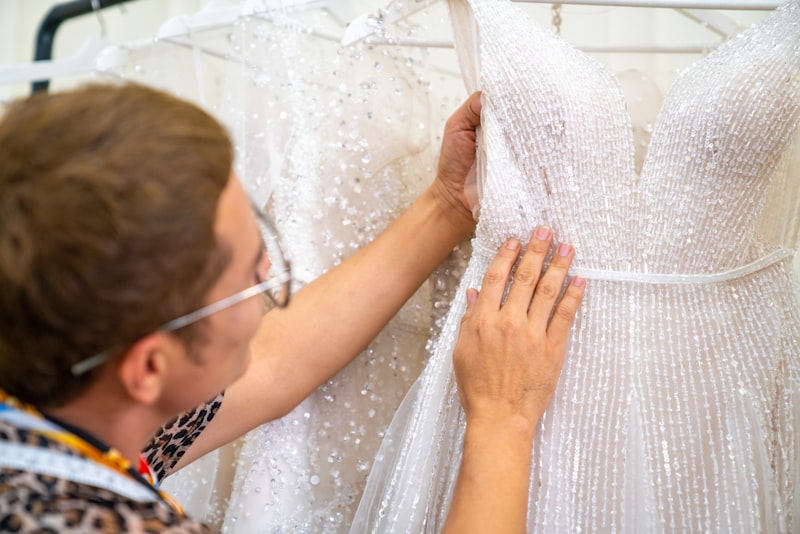Bridal Dress Sizing and Fitting Challenges: A Complete Guide for Every Bride
Bridal Dress Sizing and Fitting Challenges: A Complete Guide for Every Bride
Choosing the perfect bridal dress is one of the most exciting yet challenging parts of wedding planning. However, understanding bridal dress sizing and fitting challenges can often leave brides feeling overwhelmed. In this guide, we will explore the common challenges brides face when it comes to sizing and fitting their wedding gowns, along with expert tips to ensure a flawless fit on your special day.
The Importance of Proper Sizing
Bridal dress sizing is unique and can vary significantly from regular clothing sizes. Many brides find themselves confused as they navigate the different size charts. This challenge stems from varied sizing standards across different designers and boutiques.
Understanding Bridal Size Charts
First and foremost, it’s essential to understand that most bridal stores operate on a unique sizing scale. While you might be a size 8 in everyday clothing, you could be a size 10 or even 12 in a bridal gown. Knowing this difference can help mitigate frustration during the shopping process.
| Common Bridal Size Chart Example |
| US Size - Dress Size |
| 2 - 32 |
| 4 - 34 |
| 6 - 36 |
| 8 - 38 |
| 10 - 40 |
| 12 - 42 |
| 14 - 44 |
| 16 - 46 |
Fitting Challenges Every Bride Faces
Even with the correct size, fitting challenges can arise. Understanding these potential hurdles can help you prepare for the bridal gown fitting appointment better.
Body Shape Variations
Every bride has a unique body shape, influencing how a gown fits. Some common body types include:
- Apple Shape: Seek dresses that emphasize the waist while giving a bit more room at the top.
- Pear Shape: A-line dresses can elegantly balance out your proportions.
- Hourglass Shape: Fitted gowns can highlight your curves in all the right places.
- Rectangle Shape: Look for dresses with ruffles or embellishments to add volume.
Alterations: A Necessary Step
Most bridal gowns will require some form of alterations. Whether it’s adjusting the hemline, taking in the sides, or adding bust cups, alterations are normal and often necessary to achieve the perfect fit. Here are some tips to consider:
- Schedule your alterations at least two months before the wedding to accommodate any unexpected adjustments.
- Bring the shoes you plan to wear on your wedding day to ensure an accurate hem length.
- Consider a well-reviewed bridal tailor for the best results.

Tips for Navigating Sizing and Fitting Challenges
Armed with knowledge about sizing and fitting concerns, you can take proactive steps to ensure a successful bridal gown shopping experience. Here are some tips to consider:
1. Visit Multiple Bridal Boutiques
Don’t settle on the first dress you try on. Visiting multiple boutiques will give you a better sense of styles and sizing discrepancies. Each designer has its way of approaching sizing, and you might be surprised at how differently a size fits across various brands.
2. Don’t Rely Solely on Size Labels
Always try on dresses regardless of size. Size labels can be misleading. Focus on how the dress feels and looks on your body rather than fixating on the number associated with it.
3. Bring Supportive Friends or Family
Having supportive friends or family members with you can enhance your experience when dress shopping. They can offer valuable feedback and help you gauge how well a gown fits you from different angles.
4. Embrace Customization
If you find that off-the-rack gowns don’t fit as intended, consider customizing your dress. Many bridal designers offer made-to-measure services that allow for personalized fitting right from the start.
What to Expect on the Day of Fitting
Your bridal fitting day is one of the most important steps in preparing for your wedding. Here’s what you can typically expect during your appointment:
- Arrival at the boutique and meeting with your stylist.
- Trying on various dresses to assess which styles and sizes you like the most.
- Discussing any alterations that may be necessary.
- Setting a timeline for fittings leading up to your wedding day.
Final Thoughts on Bridal Dress Sizing and Fitting Challenges
Navigating the world of bridal dress sizing and fitting doesn’t have to be overwhelming. By understanding common challenges and employing practical strategies, you can find the perfect gown that fits not just your body but also your unique style and vision for your wedding day. Remember that this process is part of a beautiful journey toward one of the happiest days of your life. Take your time, enjoy the experience, and you will find the dress that makes you feel like the best version of yourself.
As you embark on this exciting journey, keep in mind these critical checkpoints: understanding bridal sizing, acknowledging potential fitting challenges, utilizing professional assistance, and remaining adaptable to alterations. With the right preparation, you’ll make your bridal fitting experience as smooth as possible.
